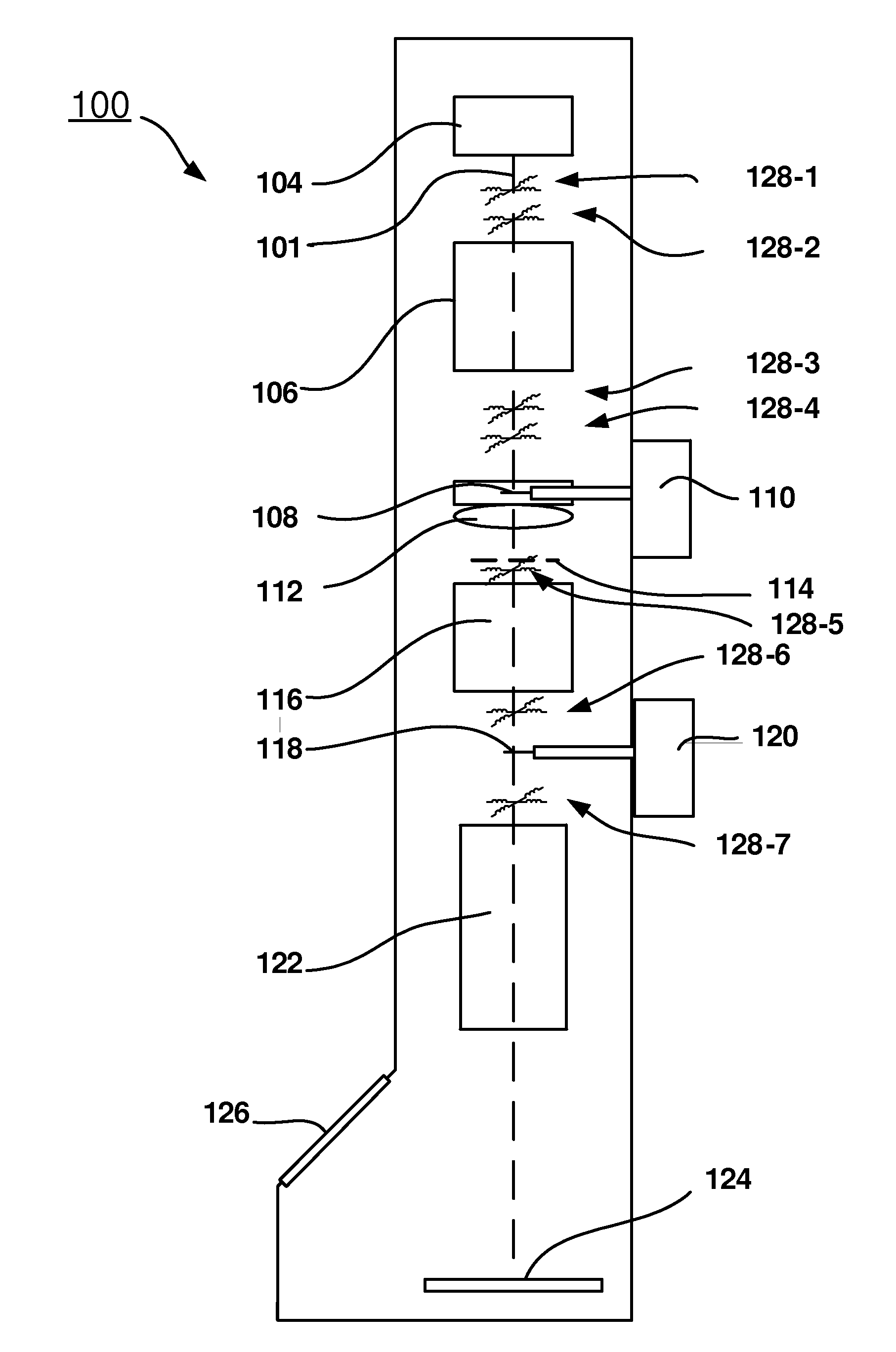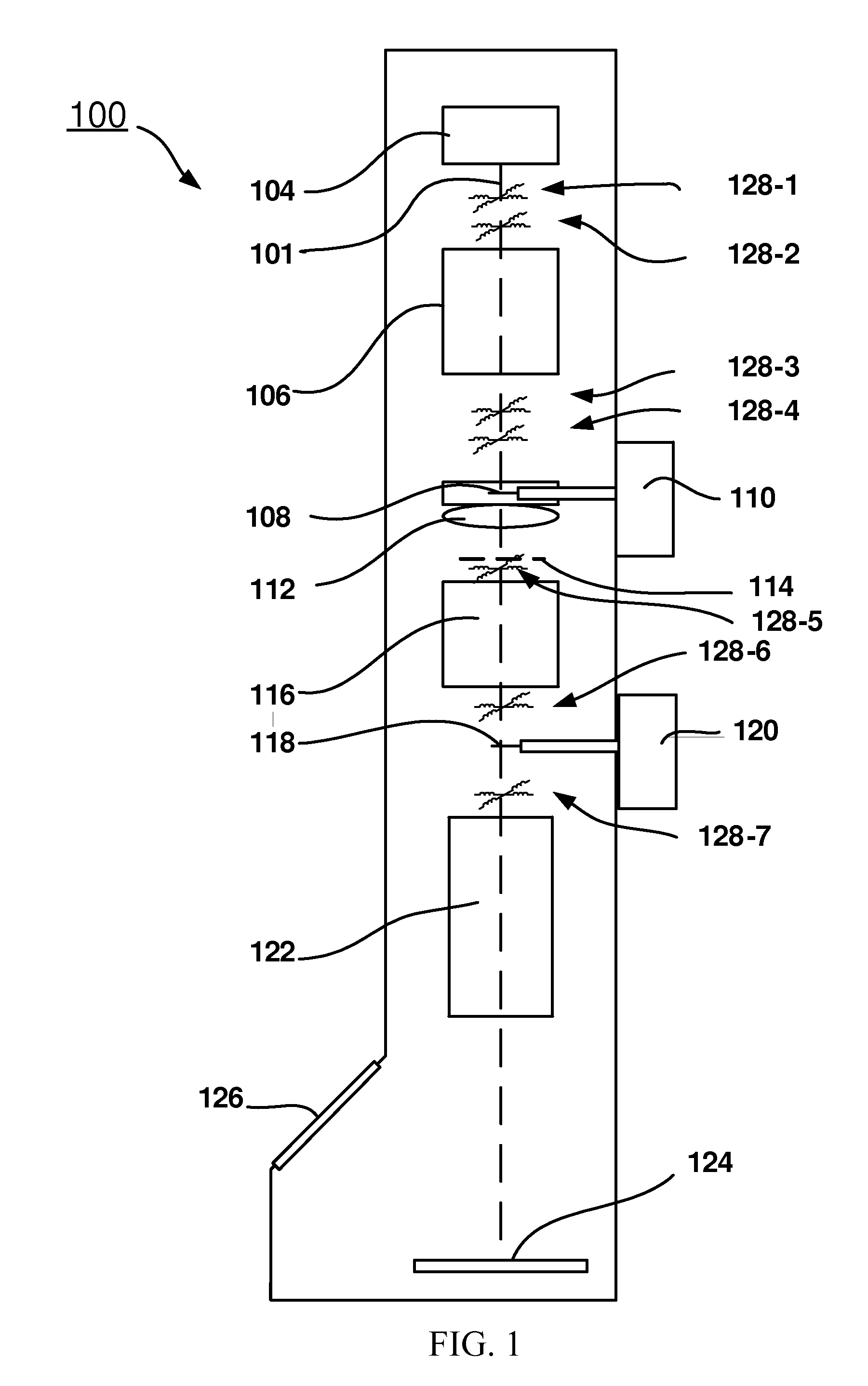Phase Plate for a TEM
a phase plate and electron microscope technology, applied in the direction of material analysis using wave/particle radiation, instruments, nuclear engineering, etc., can solve the problem of low visibility of large objects/structures
- Summary
- Abstract
- Description
- Claims
- Application Information
AI Technical Summary
Benefits of technology
Problems solved by technology
Method used
Image
Examples
first embodiment
[0057]FIG. 3a schematically shows a phase plate according to the invention.
[0058]The phase plate shows a similar holder structure 20 as the prior art phase plate. A thin film 30 is mounted on the holder, the thin layer having little effect on the beam. Inside diameter D1 an extra layer 32 is added to the thin layer, thus forming a first thin film with added thickness, whereby the part of the phase plate inside D1 resembles the prior art phase plate, showing a thin film that causes a phase shift of −π / 2, but between D1 and the inner perimeter of the holder the film is much thinner and the phase shift much smaller than in prior art phase plates. The result is that electrons passing through the film 32 are shifted over −π / 2, but electrons passing though the phase plate outside D1 are shifted much less, for example over −π / 10 (for 300 keV corresponding to a carbon layer of approximately 6 nm). Therefore the CTF for these electrons resembles the CTF of a conventional microscope without p...
third embodiment
[0068]FIG. 5 shows the phase plate according to the invention. In this embodiment the scattering of the further thin film is further diminished by forming the film as a number of spokes 50. The first thin film is now only partly surrounded by the further thin film, but most of the first thin film is surrounded by empty spaces 52. Electrons passing through these empty spaces are not scattered, and only part of the electrons impinging on the spokes are scattered. The phase difference of the electrons passing through the empty space and the spokes is small, and therefore the CTF of electrons falling on the spokes and those passing between the spokes is minimal. Therefore the image reconstructed by the interference of electrons in the image plane (at the detector or fluorescent screen) will be isotropic: it does not or hardly show an angular dependency in CTF caused by the phase plate.
[0069]It is noted that the scattering of electrons by the thin film does not lead to a different CTF, b...
PUM
 Login to View More
Login to View More Abstract
Description
Claims
Application Information
 Login to View More
Login to View More - R&D
- Intellectual Property
- Life Sciences
- Materials
- Tech Scout
- Unparalleled Data Quality
- Higher Quality Content
- 60% Fewer Hallucinations
Browse by: Latest US Patents, China's latest patents, Technical Efficacy Thesaurus, Application Domain, Technology Topic, Popular Technical Reports.
© 2025 PatSnap. All rights reserved.Legal|Privacy policy|Modern Slavery Act Transparency Statement|Sitemap|About US| Contact US: help@patsnap.com



